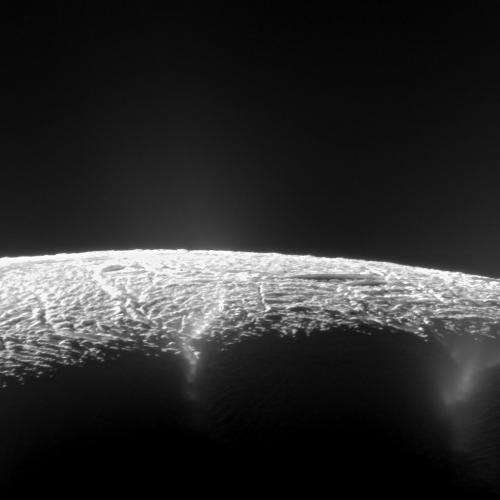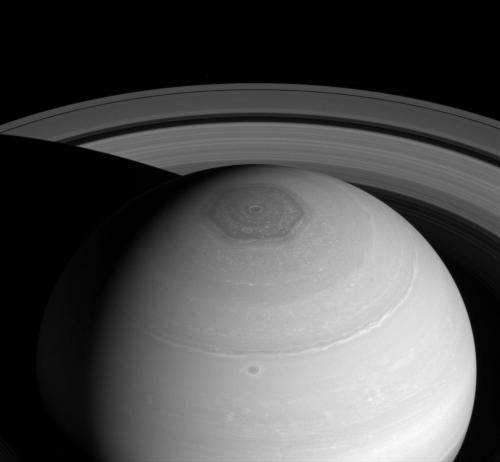Ten years of Cassini

Ten years ago, the Cassini-Huygens mission entered the Saturnian System and in January 2005, the Huygens probe landed softly on the surface of Saturn's largest moon, Titan. These historic events, which revolutionized our understanding of Saturn and of Solar System exploration, were possible thanks to a strong international collaboration led by NASA, ESA and ASI.
Representatives of that collaboration will discuss a decade of Cassini results from the mission during a two-day session organized on the 9th and 10th September at the European Planetary Science Congress (EPSC) 2014 in Cascais, Portugal. On 9th September at 13:00 GMT+1 (Link to the Hangout), Nicolas Altobelli (ESA), Linda Spilker (JPL) and other members of the mission team will participate in an EPSC Hangout, hosted by CosmoQuest's Pamela Gay, to talk about discoveries by Cassini-Huygens and answer questions from the public.
Nicolas Altobelli, ESA Cassini-Huygens Project Scientist and Convener of the session says, "It is exciting to see more than two dozen teams of researchers sharing a decade of science with the international Cassini mission, along with new findings. Cassini's exploration of the Saturn System is composed of five broad, overlapping scientific disciplines: Titan, the atmosphere of Saturn, its rings, magnetosphere, and icy satellites. In each area, Cassini has made major discoveries, provided answers to old questions, and posed new questions that may be answered in the mission's final years."
The final phase of Cassini's Northern Solstice Mission is one of the major topics that will be discussed during the session: the end of the mission, covering a period of roughly ten months, will explore for the first time the region between the rings and planet. The last orbit on 15 September 2017 will plunge the spacecraft into Saturn, where it will be vaporized by the planet's atmosphere.
Many "firsts" by Cassini over the last 10 years will be presented and discussed during the session. Cassini-Huygens explored Titan, whose surface was 'terra incognita' before the mission arrival since its dense atmosphere even precluded high-resolution observations by the cameras onboard the Voyager spacecraft. Cassini discovered that Titan has hydrocarbon lakes and seas, the majority of which are located near the north pole, studied their seasonal changes and measured that the Ligeia Mare is up to 150-200 meters deep. Cassini also revealed that Titan's south polar haze is a seasonal phenomenon.

Among the mission's others major successes, perhaps the most emblematic discovery is the cryo-volcanic activity of Enceladus, which feeds the E ring with icy grains and loads Saturn's magnetosphere with water. Other spectacular observations include a large hurricane raging at Saturn's north pole, as well as the onset and evolution of a massive storm that lasted nearly a year and encircled the planet. Distinctive, propeller-like structures were observed in the rings, demonstrating that accretion processes are on-going, while other ring features appeared to be records of past, large meteorite impacts. Last but not least, radio science investigations showed that a subsurface ocean must exist in Titan's interior, as well as a liquid subsurface layer at the south pole of Enceladus. In both cases, this liquid is most likely a mixture of water and ammonia. These findings actually open a new field of planetary investigations, confirming the astrobiological potential of icy moons around gas giants through their ability to maintain water in liquid form, even in the cold outer regions of the Solar System.
Provided by Europlanet





















